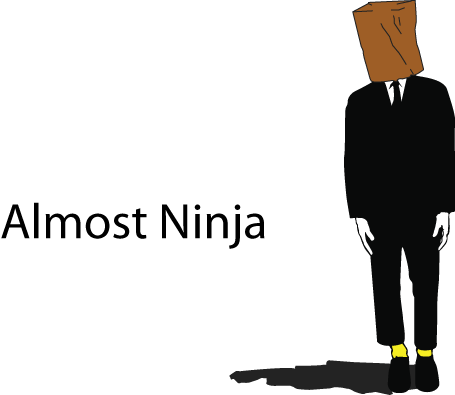
BAIBAKOV art projects is proud to announce the first major exhibition of Luc Tuymans in Russia, where the artist will also be a special guest of the Third Moscow Biennale of Contemporary Art. 'Against the Day' will open at the Red October Chocolate Factory in Moscow on September 25th, coinciding with the artist's first US retrospective which opens at the Wexner Center for the Arts, Columbus, Ohio from September 17th.
Luc Tuymans is recognised as one of the most significant and influential contemporary painters working today. 'Against the Day' is the last of four international exhibitions held from 2006 to 2009, which form part of what the artist describes as "a triptych." Each constitutes a critique of, in his own words, "utopic ideals in society" with 'Restoration' (2006) and 'Les Revenants' (2007) looking at the power structures of the Jesuit religious order, while 'Forever: The Magic of Management' (2008) addresses the impact of the fantasy world of Walt Disney.
'Against the Day' explores aspects of virtual reality and its effects on our perception of reality. Tuymans takes the exhibition's title and inspiration from the recent work of the American novelist Thomas Pynchon, whom he describes as "the man who introduced paranoia in American literature," observing that, "the idea of tearing down utopia is present in all his work." Of his own show, Tuymans has said that 'Against the Day' "presents the idea of an end, showing things as raw material, dispersed and disjointed, simultaneously offering more and more propositions, but basically going nowhere. It is the world as we know it."
Included in this exhibition are the seminal paintings Against the Day I and Against the Day II (2008), images which capture the effect of pressing the pause button on a video screen. Against the Day I is a staged image which shows a man in the corner of a garden, shovelling the ground. Against the Day IIportrays the same scene as if after an interval of time, an advance of several frames, during which the figure has stopped digging and stares straight ahead, frozen.
Other paintings draw their subject matter from sources as diverse as video games, television shows and cell phone photography. In Big Brother (2008), Tuymans recreates a still from the surveillance video of the popular UK reality show. In the resulting image, the stage set bedroom appears almost unrecognisable as a strange barracks. In the diptych, Neck Hair (2009), the artist uses an incomplete virtual rendering of a 3D model's head to suggest a man's advancing baldness "caught on film" by a security camera.
'Against the Day' is organized by Dirk Snauwaert, Director at Wiels Center for contemporary art in Brussels, and Curator of the Belgian pavilion at the current Venice Biennale, and is presented in conjunction with BAIBAKOV art projects' Maria Baibakova and Kate Sutton. The 20 new works were launched at the new Wiels Center for contemporary art in Brussels in February this year, where they marked the artist's long overdue first solo exhibition in the capital of his home country.
Luc Tuymans is represented by David Zwirner, New York, and Zeno X Gallery, Antwerp.
Luc Tuymans is recognised as one of the most significant and influential contemporary painters working today. 'Against the Day' is the last of four international exhibitions held from 2006 to 2009, which form part of what the artist describes as "a triptych." Each constitutes a critique of, in his own words, "utopic ideals in society" with 'Restoration' (2006) and 'Les Revenants' (2007) looking at the power structures of the Jesuit religious order, while 'Forever: The Magic of Management' (2008) addresses the impact of the fantasy world of Walt Disney.
'Against the Day' explores aspects of virtual reality and its effects on our perception of reality. Tuymans takes the exhibition's title and inspiration from the recent work of the American novelist Thomas Pynchon, whom he describes as "the man who introduced paranoia in American literature," observing that, "the idea of tearing down utopia is present in all his work." Of his own show, Tuymans has said that 'Against the Day' "presents the idea of an end, showing things as raw material, dispersed and disjointed, simultaneously offering more and more propositions, but basically going nowhere. It is the world as we know it."
Included in this exhibition are the seminal paintings Against the Day I and Against the Day II (2008), images which capture the effect of pressing the pause button on a video screen. Against the Day I is a staged image which shows a man in the corner of a garden, shovelling the ground. Against the Day IIportrays the same scene as if after an interval of time, an advance of several frames, during which the figure has stopped digging and stares straight ahead, frozen.
Other paintings draw their subject matter from sources as diverse as video games, television shows and cell phone photography. In Big Brother (2008), Tuymans recreates a still from the surveillance video of the popular UK reality show. In the resulting image, the stage set bedroom appears almost unrecognisable as a strange barracks. In the diptych, Neck Hair (2009), the artist uses an incomplete virtual rendering of a 3D model's head to suggest a man's advancing baldness "caught on film" by a security camera.
'Against the Day' is organized by Dirk Snauwaert, Director at Wiels Center for contemporary art in Brussels, and Curator of the Belgian pavilion at the current Venice Biennale, and is presented in conjunction with BAIBAKOV art projects' Maria Baibakova and Kate Sutton. The 20 new works were launched at the new Wiels Center for contemporary art in Brussels in February this year, where they marked the artist's long overdue first solo exhibition in the capital of his home country.
Luc Tuymans is represented by David Zwirner, New York, and Zeno X Gallery, Antwerp.























